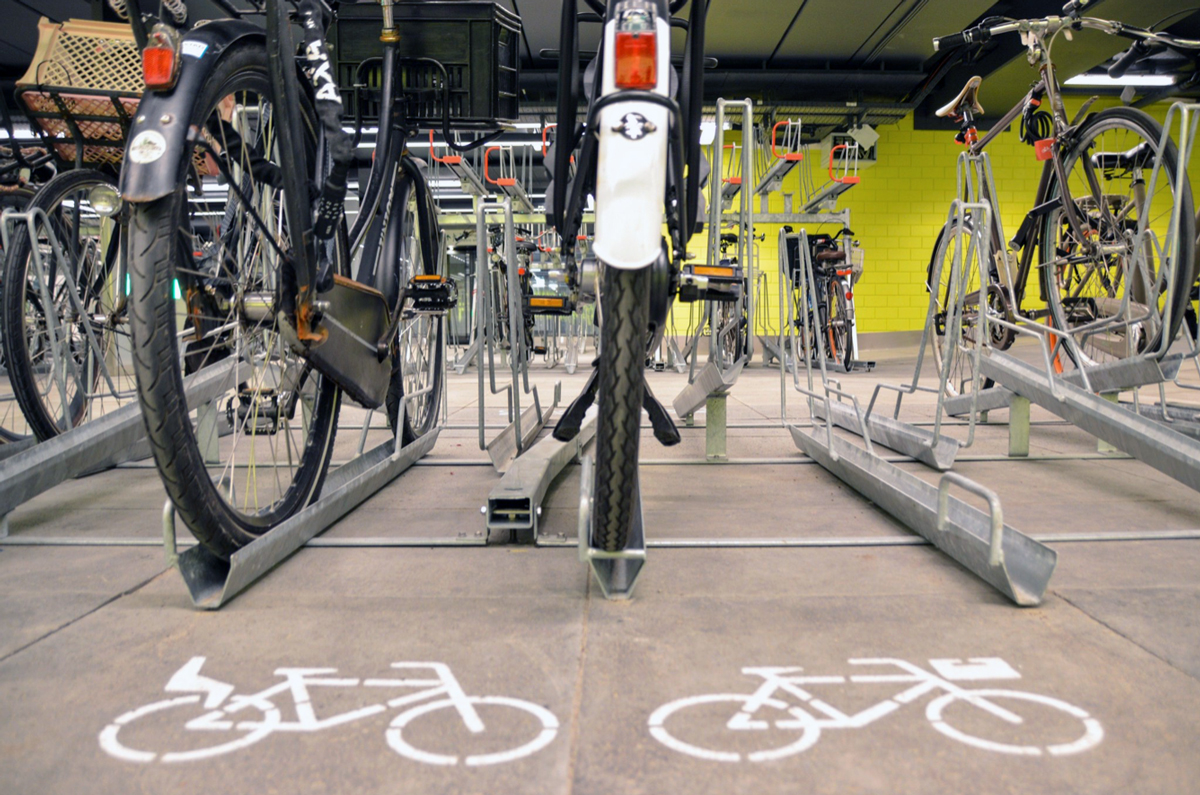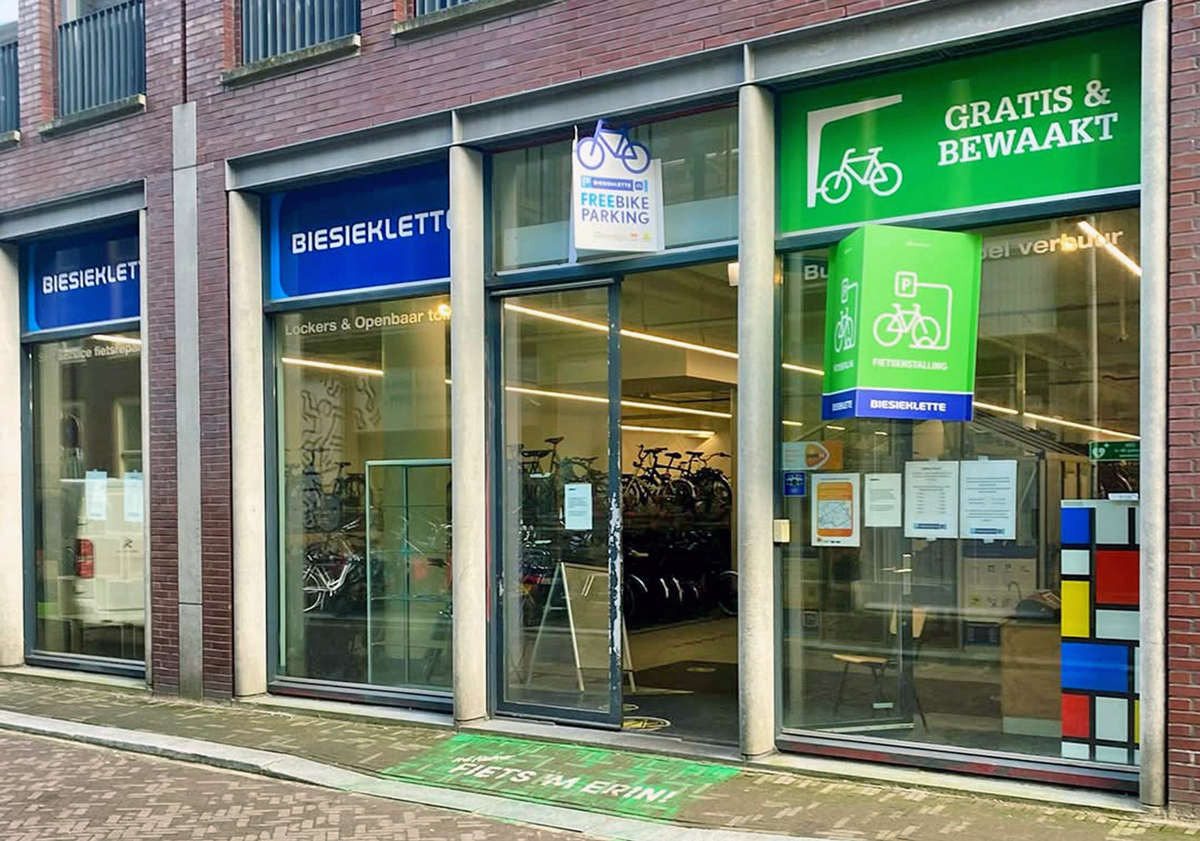The Building Blocks
3.1 Bicycle Parking, now and in the future
Bicycle parking in the Netherlands is changing. The growing popularity of bicycles, especially e-bikes and cargo bikes, and the increasing pressure on public space necessitate a new approach. This is evident in the visions and plans outlined in three important documents, supplemented by the practical experience of bicycle consultancy Bikenine.
The publication "Bicycle Parking of the Future" emphasizes that bicycle parking can no longer be considered a secondary matter. Indoor bicycle parking facilities must be an extension of public space, prioritizing quality, user-friendliness, accessibility, and safety. For cities like Amsterdam, Rotterdam, Utrecht, and Eindhoven, indoor bicycle parking facilities are a solution to alleviate pressure on streets and squares. The challenge lies in making these facilities attractive so that cyclists are willing to use them. This means strategic locations, good management, and additional amenities such as charging points and security.
The ‘Bicycle Vision 2040’ from the Cyclists’ Union goes a step further and describes a future in which the bicycle is the primary means of transport for short and medium distances. In this vision, indoor bicycle parking facilities are an essential part of the cycling system. They provide space and security in densely built-up cities and fit within the broader ambition for sustainable, healthy, and inclusive mobility. The vision outlines a Netherlands where cycling is not only functional, but also a source of comfort
The ‘National Long-Term Vision for Cycling’ places these ideas in a concrete policy context. The document emphasizes the need for a "scale leap": a substantial investment in cycling infrastructure, including bicycle parking facilities. Underground and indoor solutions are considered essential, especially at public transport hubs, city centers, and busy residential areas. Innovative solutions, such as flexible parking for peak loads, are presented as necessary to keep cities accessible and liveable.
Bikenine's practice-oriented approach seamlessly aligns with these visions. With concepts such as projected bicycle bays (pop-up parking) and ‘Park & Walk’ (P+L), they focus on improving the ease of use and accessibility of bicycle parking. They understand that a bicycle parking space must not only be functional but also attractive, easy to find, and designed with the needs of diverse cyclists in mind.

All visions emphasize the same core idea: a bicycle parking location is not just a facility, but a crucial pillar in the mobility and liveability of the future. Through strategic collaboration and targeted investments, the Netherlands can further build an infrastructure where cycling is a self-evident and enjoyable choice for everyone.

3.2 Components of an indoor bicycle parking facility
This checklist for indoor bicycle parking provides guidelines for optimal design and management. A strategic location with easy access from major cycle routes is essential. The entrance must be easily identifiable through clear signage, recognizable symbols, and a distinctive design. Inside the facility, the focus is on smooth traffic flow and clear communication, supported by logical pathways and consistent signage. Finally, additional services such as maps and optional bicycle repair facilities contribute to user convenience.
Improving access to a bicycle parking facility begins with an inviting and easily recognizable entrance. Clear signage using universal symbols, such as the P+Bike symbol, clearly directs cyclists to the facility. A strategic location, close to main cycle routes, public transport, or popular destinations, further enhances findability.
A spacious and obstacle-free entrance, possibly with automatic doors, ensures that all users, including those with cargo bikes or e-bikes, can enter without difficulty. Good lighting and clear sightlines increase safety and create a pleasant experience for users.
Furthermore, access can be supported by digital tools, such as an app that directs cyclists to the nearest facility, and information boards at the entrance displaying opening times and additional facilities. A combination of smart design choices, practical measures, and modern technology makes access to bicycle parking facilities comfortable, safe, and efficient.

3.3 Functions and target groups
When designing indoor bicycle parking facilities, it is important to consider the various functions the facility can serve and the diverse target groups that will use it. The need for bicycle parking spaces is largely determined by the user's destination and type of journey. Based on the CROW's Manual for Bicycle Parking, the following target groups can be distinguished:
- Housing: Bicycle parking spaces at residential buildings and housing estates, for both residents and visitors.
- Work: Bicycle parking facilities at offices and business parks, tailored to commuters and business visitors.
- Shopping (Groceries): Short-term bicycle parking spaces at supermarkets and other daily amenities.
- Shopping (Retail): Bicycle parking facilities in city centers and shopping areas, focusing on accessibility and flow.
- Sports, Culture, Recreation and Leisure: Bicycle parking at sports facilities, theatre’s, museums, and recreational areas.
- Hospitality and (Accommodation) Recreation: Bicycle parking solutions at restaurants, cafes, and tourist accommodations.
- Healthcare and Services: Bicycle parking at hospitals, general practitioner surgeries, and other healthcare institutions.
- Education: Bicycle parking spaces at schools, universities, and colleges, with consideration for large-scale and long-term parking.
Each function has its own user patterns and demands on the storage facility. For example, in housing and workplaces, long-term parkers are dominant and security is an important aspect. While in shops and recreational areas the emphasis is on quick access and high throughput. The 'Checklist indoor bicycle parking' takes these different usage purposes into account and provides tools to optimally adapt storage facilities to the specific requirements of the location and target group.
3.4 Types of cyclists
We distinguish between different types of cyclists when it comes to bicycle parking facilities. These include the following:
1. Commuters
|
Characteristics |
Use bicycles to travel to work or school, often in combination with trains or buses. |
|
Needs |
|
2. Errand cyclists
|
Characteristics |
Use their bicycles for daily or weekly grocery shopping, often with a crate or panniers. |
|
Needs |
|
3. Residents
|
Characteristics |
Use bicycles for various daily activities such as recreation, visiting friends or family, or short trips in the neighbourhood. |
|
Needs |
|
4. Parents with children
|
Characteristics |
Use bicycles to transport children to school, daycare, or sports clubs. |
|
Needs |
|
5. Recreational cyclists
|
Characteristics |
Use bicycles for leisure or sporting trips, often in nature reserves or tourist cities. |
|
Needs |
|
6. Shoppers
|
Characteristics |
Use bicycles to visit shops and restaurants. |
|
Needs |
|
7. People with disabilities
|
Characteristics |
Use adapted bicycles such as tricycles, recumbent bicycles, or hand bikes for mobility. |
|
Needs |
|
8. Elderly
|
Characteristics |
Often use e-bikes for convenience and longer distances. |
|
Needs |
|
9. Students
|
Characteristics |
Use bicycles for transportation to schools, universities, and social activities. |
|
Needs |
|

3.5 Types of bicycles
"Nowadays, we distinguish a multiplicity of bicycle types, which are named by various organizations (CROW, the Cyclists' Union, etc.)
- City bike;
- Electric bike (e-bike);
- Fatbike;
- Road bike;
- Mountain bike;
- Cargo bike;
- Recumbent bike;
- Tricycle;
- Handbike;
- Tandem;
- Speed pedelec;
- Bicycle with child seat;
- Folding bike.
3.6 Types of indoor bicycle parking facilities
We recognise several types of indoor bicycle parking facilities, each with its own specific requirements and wishes.
1. Municipal bicycle parking
|
Description |
A public bicycle parking facility managed by the municipality, often free or for a small fee. |
|
Location |
City centers, public transport hubs, or near large event venues. |
|
Users |
General public, including commuters, shoppers, and recreational cyclists. |
|
Purpose |
To promote cycling and reduce bicycle parking pressure in public spaces. |
2. Neighbourhood bicycle parking
|
Description |
Small-scale, neighbourhood-focused parking, often located in residential areas. Usually privately operated. |
|
Location |
Municipal or neighbourhood locations such as a former garage or shed. |
|
Users |
Residents in neighbourhoods with limited private bicycle storage space. |
|
Purpose |
To offer a secure place for bicycles if residents lack a safe parking space. |
3. Residential bicycle parking
|
Description |
Large-scale parking facilities at train stations, often managed by NS (Dutch Railways) or ProRail. |
|
Location |
Inside or directly next to the residential building. |
|
Users |
Exclusively accessible to residents. |
|
Purpose |
Long-term and secure storage of private bicycles, often overnight. |
4. Bicycle parking facilities at stations (Public transport parking)
|
Description |
Large-scale parking facilities at train stations, often managed by NS (Dutch Railways) or ProRail. |
|
Location |
Directly next to train, metro or bus stations. |
|
Users |
Commuters and travelers. |
|
Purpose |
Integration of bicycle use with public transport. |
5. Commercial bicycle parking
|
Description |
Parking facilities managed by businesses, often with extra services such as repair or rental. |
|
Location |
City centers, shopping areas, or near offices. |
|
Users |
Customers, employees, or tourists. |
|
Purpose |
Commercial service provision and ease of use. |
6. Company bicycle parking
|
Description |
Specifically for employees of a company or institution. |
|
Location |
On company premises, usually indoors. |
|
Users |
Employees. |
|
Purpose |
To encourage cycling among employees and provide secure storage. |
